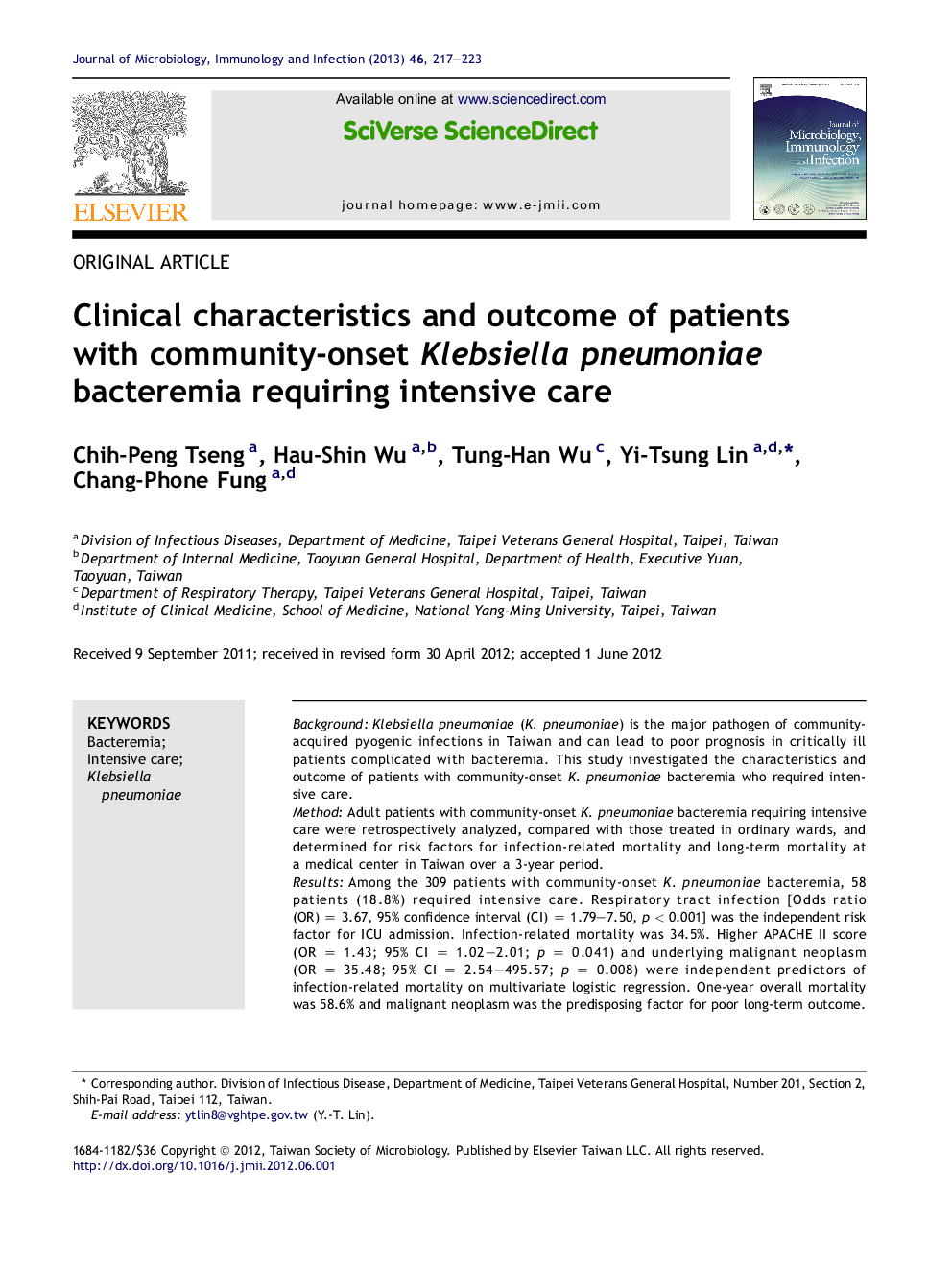| Article ID | Journal | Published Year | Pages | File Type |
|---|---|---|---|---|
| 3378363 | Journal of Microbiology, Immunology and Infection | 2013 | 7 Pages |
BackgroundKlebsiella pneumoniae (K. pneumoniae) is the major pathogen of community-acquired pyogenic infections in Taiwan and can lead to poor prognosis in critically ill patients complicated with bacteremia. This study investigated the characteristics and outcome of patients with community-onset K. pneumoniae bacteremia who required intensive care.MethodAdult patients with community-onset K. pneumoniae bacteremia requiring intensive care were retrospectively analyzed, compared with those treated in ordinary wards, and determined for risk factors for infection-related mortality and long-term mortality at a medical center in Taiwan over a 3-year period.ResultsAmong the 309 patients with community-onset K. pneumoniae bacteremia, 58 patients (18.8%) required intensive care. Respiratory tract infection [Odds ratio (OR) = 3.67, 95% confidence interval (CI) = 1.79–7.50, p < 0.001] was the independent risk factor for ICU admission. Infection-related mortality was 34.5%. Higher APACHE II score (OR = 1.43; 95% CI = 1.02–2.01; p = 0.041) and underlying malignant neoplasm (OR = 35.48; 95% CI = 2.54–495.57; p = 0.008) were independent predictors of infection-related mortality on multivariate logistic regression. One-year overall mortality was 58.6% and malignant neoplasm was the predisposing factor for poor long-term outcome.ConclusionNearly one fifth of patients with community-onset K. pneumoniae bacteremia required intensive care and this was associated with high mortality and poor long-term prognosis. Physicians should recognize the distinct characteristics and risk factors for mortality among these patients.
